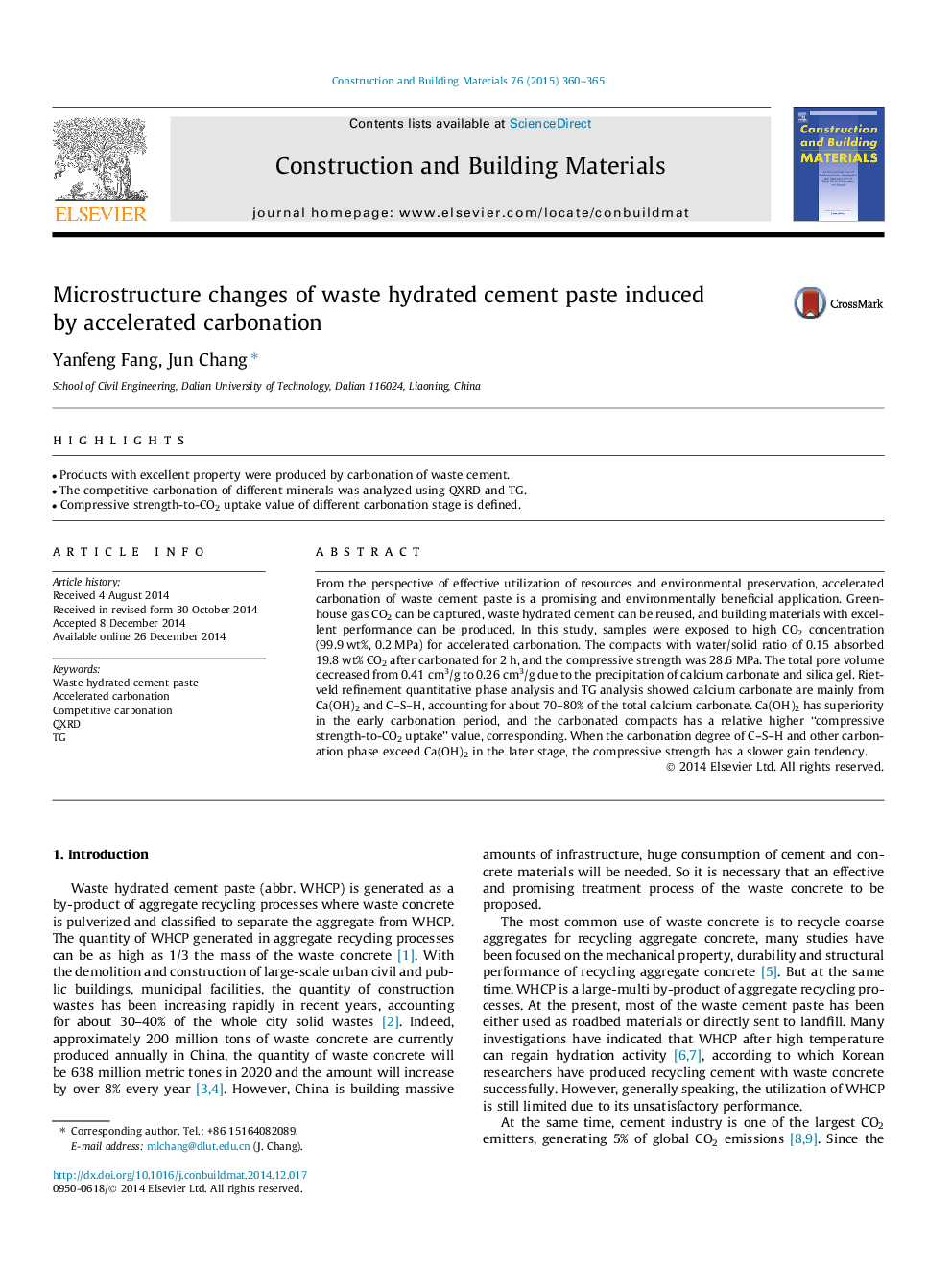| کد مقاله | کد نشریه | سال انتشار | مقاله انگلیسی | نسخه تمام متن |
|---|---|---|---|---|
| 257251 | 503580 | 2015 | 6 صفحه PDF | دانلود رایگان |
• Products with excellent property were produced by carbonation of waste cement.
• The competitive carbonation of different minerals was analyzed using QXRD and TG.
• Compressive strength-to-CO2 uptake value of different carbonation stage is defined.
From the perspective of effective utilization of resources and environmental preservation, accelerated carbonation of waste cement paste is a promising and environmentally beneficial application. Greenhouse gas CO2 can be captured, waste hydrated cement can be reused, and building materials with excellent performance can be produced. In this study, samples were exposed to high CO2 concentration (99.9 wt%, 0.2 MPa) for accelerated carbonation. The compacts with water/solid ratio of 0.15 absorbed 19.8 wt% CO2 after carbonated for 2 h, and the compressive strength was 28.6 MPa. The total pore volume decreased from 0.41 cm3/g to 0.26 cm3/g due to the precipitation of calcium carbonate and silica gel. Rietveld refinement quantitative phase analysis and TG analysis showed calcium carbonate are mainly from Ca(OH)2 and C–S–H, accounting for about 70–80% of the total calcium carbonate. Ca(OH)2 has superiority in the early carbonation period, and the carbonated compacts has a relative higher “compressive strength-to-CO2 uptake” value, corresponding. When the carbonation degree of C–S–H and other carbonation phase exceed Ca(OH)2 in the later stage, the compressive strength has a slower gain tendency.
Journal: Construction and Building Materials - Volume 76, 1 February 2015, Pages 360–365
